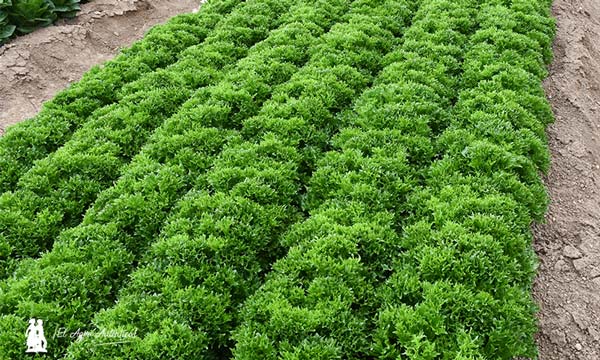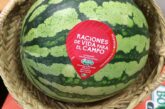Tres nuevas razas de Bremia lactucae, Bl: 38EU, Bl: 39EU y Bl: 40EU identificadas y denominadas en Europa.
Bremia lactucae, o mildiu de la lechuga, es una enfermedad vegetal común en la lechuga. Este hongo puede tener un gran impacto en el cultivo de la lechuga. Bremia lactucae, el agente causal del mildiu de la lechuga es genéticamente muy variable. Incluso en un mismo campo de producción de lechuga pueden estar presentes varias razas.

El IBEB-UE evaluó los aislados de Bremia lactucae encontrados en Europa en 2021 y 2022 y llegó a la conclusión de que tres aislados candidatos proporcionaban resultados coherentes en las pruebas. El IBEB-UE decidió denominar estas variantes como Bl: 38EU, Bl: 39EU y Bl: 40EU.
Para obtener información más detallada sobre Bl: 38EU, Bl: 39UE y Bl: 40EU,en el comunicado de prensa oficial del IBEB-UE.
Resistencias de BASF en lechuga
La lechuga es un cultivo clave en el porfolio de Nunhems. Proporcionar la mejor solución a nuestros clientes es siempre nuestra prioridad. La resistencia a Bremia lactucae es un rasgo clave en nuestro programa de mejora de lechuga. Junto con nuestro equipo de mejora e I+D, supervisamos continuamente el desarrollo de Bremia y buscamos nuevas fuentes de resistencia. Estos esfuerzos nos ayudan a ofrecer a nuestros clientes un porfolio fiable de productos resistentes a Bremia. Además de la resistencia genética, BASF quiere destacar la importancia de una gestión integrada del cultivo. La combinación de la resistencia con una protección química adecuada debería proporcionar una buena producción libre de Bremia.

BASF ofrece una amplia gama de variedades de lechuga con un amplio abanico de resistencias. Puede encontrar información actualizada sobre la gama de lechugas de Nunhems y sus respectivas resistencias en nuestra página web.
La resistencia a las razas de Bremia lactucae Bl: 16-28EU ya no se reivindicará en las comunicaciones comerciales a partir del 1 de julio de 2023
El IBEB recoge y evalúa más de 300 aislados al año en Europa. En los últimos años, ya no se han encontrado Bl: 16-28EU. Por lo tanto, el IBEB-UE propone la siguiente cláusula de exención de responsabilidad en los catálogos de semillas y otras comunicaciones comerciales.
Las razas Bl:16-28EU de Bremia lactucae (mildiu de la lechuga) ya casi no se observan en la práctica en Europa y, por tanto, no tienen valor para describir los niveles de resistencia a la enfermedad. Por lo tanto, a partir del 1 de julio de 2023, las declaraciones comerciales de resistencia para las variedades de lechuga se referirán únicamente a Bl: 29EU y razas con un número superior, y ya no a las razas Bl: 16-28EU.
Para obtener información más detallada sobre Bl: 38EU, Bl: 39EU y Bl: 40EU, descargue el comunicado de prensa oficial del IBEB-UE.
Comunicado de prensa oficial del IBEB-UE.
Three new races of Bremia lactucae, Bl: 38EU, Bl: 39EU and Bl: 40EU identified and denominated in Europe.
The International Bremia Evaluation Board Europe (IBEB-EU) has collected more than 350 Bremia isolates in European lettuce in 2022 and compared them with the 377 isolates found in 2021. Bremia lactucae, the causal agent of downy mildew in lettuce, is genetically very variable. Even within one lettuce production field, several races may be present.
The IBEB-EU met in December 2022 in Paris to evaluate Bremia lactucae isolates found in Europe in 2021 and 2022. In 2022, only the official races Bl: 35EU, Bl: 36EU and Bl: 37EU were found at a very low frequency. However, three virulence patterns, identical with isolates PT2036, FR9872 and ES10775, were found in 8%, 6% and 16% of the isolates, respectively. The first two were already found in 2021, while the last one appeared in 2022.
A formal evaluation process started in April 2022. In April 2023, the IBEB-EU concluded that the three candidate isolates provided consistent test results.
PT2036: This isolate from Portugal is denominated as the type of new race Bl: 38EU with IBEB-D sextet code 46-15-38. Bl: 38EU was found repeatedly, not only in Portugal but also in France, North Spain, South UK, Hungary, Switzerland and South Germany. Bl: 38 breaks the resistance of S18 (R58 gene), and was found more frequently in Southern Europe.
FR9872: This isolate from France is denominated as the type of new race Bl: 39EU with IBEB-D sextet code 55-15-33. Bl: 39EU was found repeatedly, not only in West and Central France, but also in North and West Germany, Switzerland, the Netherlands, South UK, and Portugal. Bl: 39 breaks the resistance of S18 (R58 gene), and was found more frequently in Northern Europe.
ES10775: This isolate from Spain is denominated as the type of new race Bl: 40EU with IBEB-D sextet code 62-31-01. Bl: 40EU was found repeatedly, not only in Spain, but also in France, Germany, the Netherlands, the United Kingdom, Italy and Norway. Bl: 40 breaks the resistance of S11 (R53 gene). The resistance of S11 has been in the market since 2002, and hardly being attacked by Bremia until the beginning of the outbreak in 2022.
The board emphasizes the importance of chemical control and hygiene measures in addition to plant resistance. Fungicide application, especially in a young plant stage, gives additional protection to resistant lettuce crops, which will help prevent the development of new Bremia races. Proper hygiene practices, such as removal of debris and diseased plants, cleaning of farm equipment and prevention of prolonged periods of leaf wetness, will reduce the spread of Bremia in lettuce crops.
Resistance to Bremia lactucae races Bl: 16-28EU will not be claimed any more in commercial communications from July 1st 2023
The European International Bremia Evaluation Board (IBEB-EU) is collecting and evaluating more than 300 European isolates per year, mainly originating from lettuce varieties and lines in breeders’ and growers’ fields, and draws conclusions not only about the rise of new races, but also about the disappearance of some of the known races. Commercial resistance claims of resistance for races that were important in the past but not in the present time are not relevant for growers. In recent years, Bl: 16-28EU were no longer found. Therefore, IBEB-EU proposes the following disclaimer in seed catalogues and other commercial communications:
The races Bl:16-28EU of Bremia lactucae (downy mildew in lettuce) are hardly observed in practice in Europe anymore and thus have no value for describing resistance levels to the disease. Therefore from July 1st 2023 onwards, commercial resistance claims for lettuce varieties will refer only to Bl: 29EU and races with a higher number, and no longer to races Bl: 16-28EU.
The use of races Bl: 16-28EU will remain possible for registration and plant breeders’ rights, and it is still compulsory, as before, to claim resistance or susceptibility for race Bl: 16EU in the variety testing process, presumably until the next revision of the official variety testing protocol.
The IBEB-EU consists of representatives of the Dutch and French seed business associations Plantum NL and UFS, and the independent organisations GEVES/SNES and Naktuinbouw. IBEB is supported by several Bremia researchers across Europe. Lettuce breeders of Bejo, Enza Zaden, GAUTIER Semences , BASF, Rijk Zwaan, Bayer, Syngenta and Vilmorin represent the industry.
All denominated isolates and seeds of the differential set are available at GEVES/SNES (France) and at Naktuinbouw (The Netherlands).










 José Antonio Arcos
José Antonio Arcos
 Ana Rubio
Ana Rubio